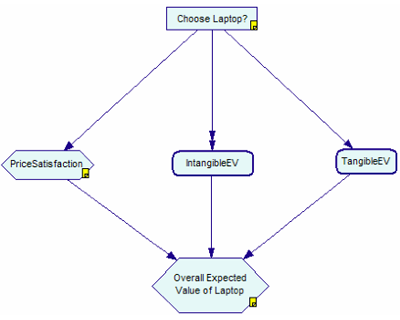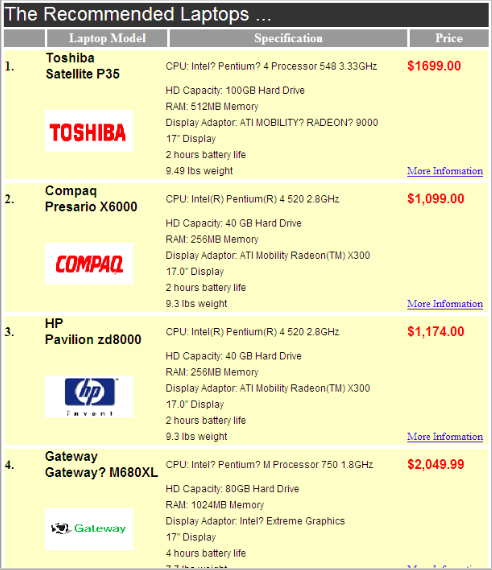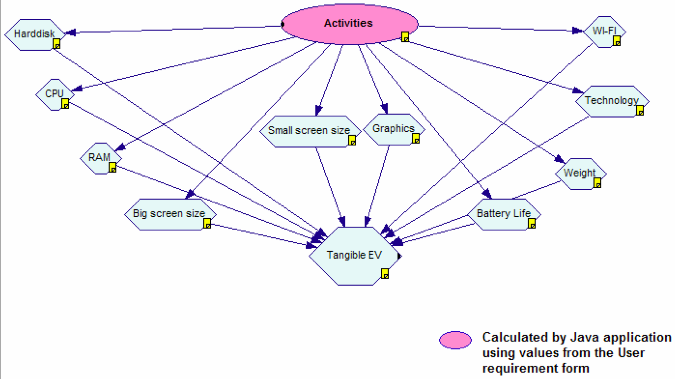| |
| Interesting Project | Decision Support System (DSS) for Laptop Buyer | ||
PROJECT DESCRIPTION Buying an appropriate laptop could sometimes be a hard decision for many people because several decision factors get involved in the decision making process. This problem inspires our team to develop an innovative decision support system providing laptop buyers with a short list of recommended laptop models retrieved from the laptop database, which can be updated as often as needed, resulting in the extensible and flexible decision support system.
PROJECT OBJECTIVE The main project objective is to develop a decision support system that can help laptop buyers decide which laptop models to buy based on their budget, preferences and intended uses. DECISION SUPPORT SYSTEM (DSS) DESIGN
Our team brainstormed and developed a decision model where three main aspects are taken into consideration: tangible aspect (i.e., computer specification), intangible aspect (e.g., brand reputation, warranty information, custom service, reliability), and price satisfaction (user's budget). A list of three recommended laptops with their specification and price is presented as a DSS output, which is ordered by the greatest match to the interpreted needs of the user (obtained from the input page). Hyperlinks to the manufacture webpage of each particular model are available for users to find more about laptop features, laptop apperance and detailed technical information and how to purchase.
PROJECT CONTRIBUTION Researching; Decision Modeling; User Interface Design; Documentation
PROJECT CREDITS Team Member: Jaruwan Laptrakool, Korporn Panyim, Warat Chesdavanijkul
PROJECT ARTIFACTS |
||
DSS Input Page |
||
DSS Output Page |
||
 |
||
The simplified model of DSS (Top-Level) |
||
The detailed model of Tangible EV Node (Second-Level) |
||


